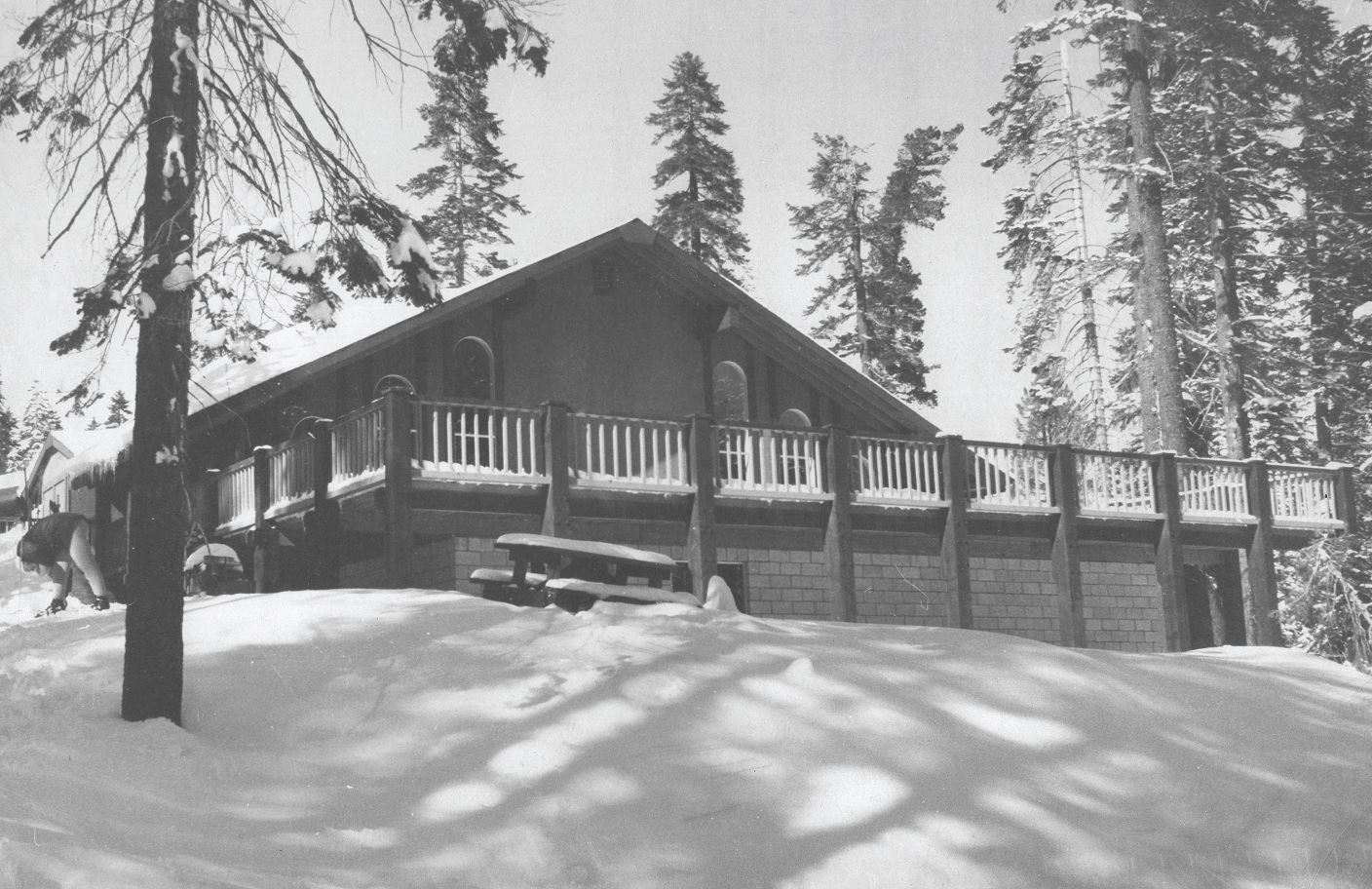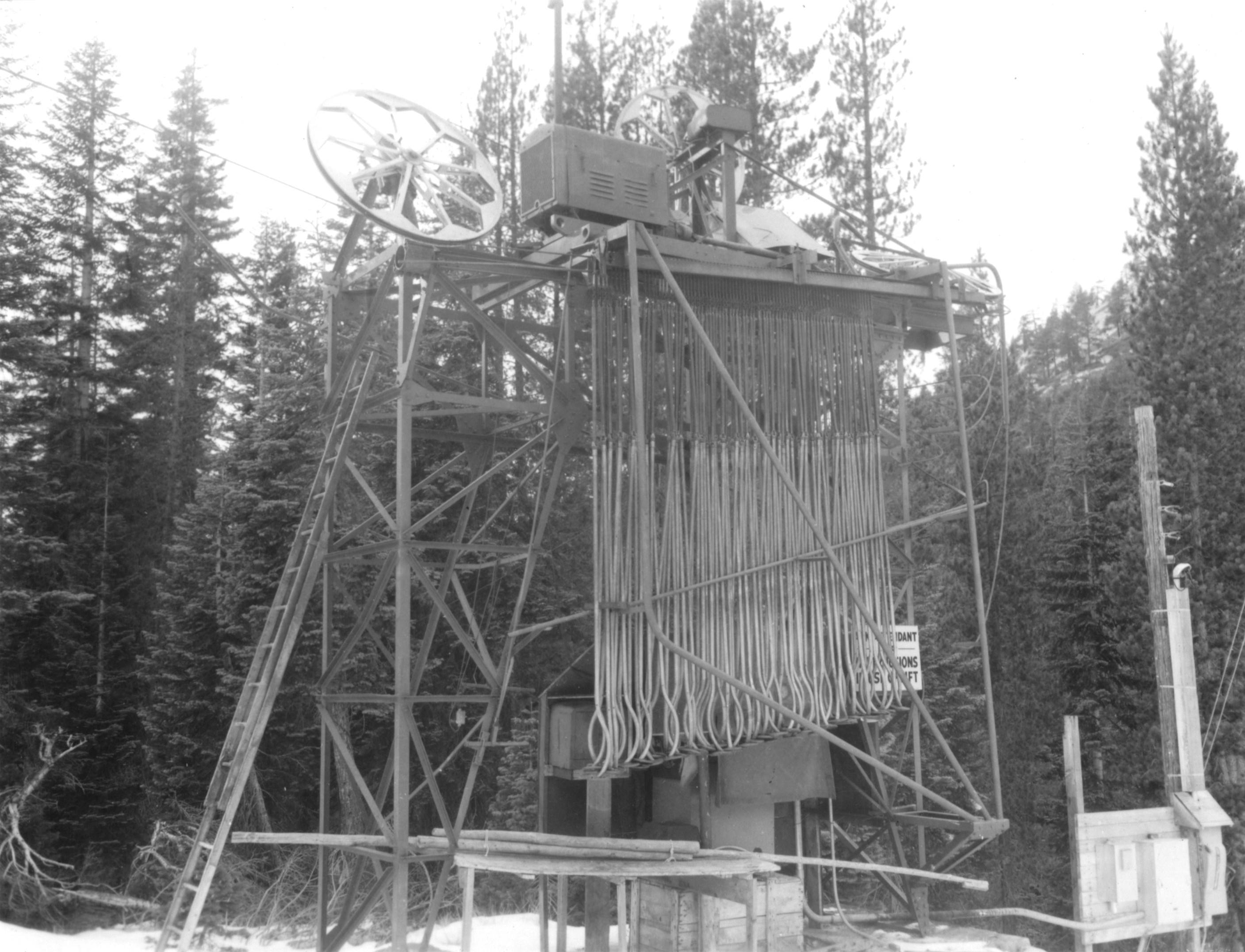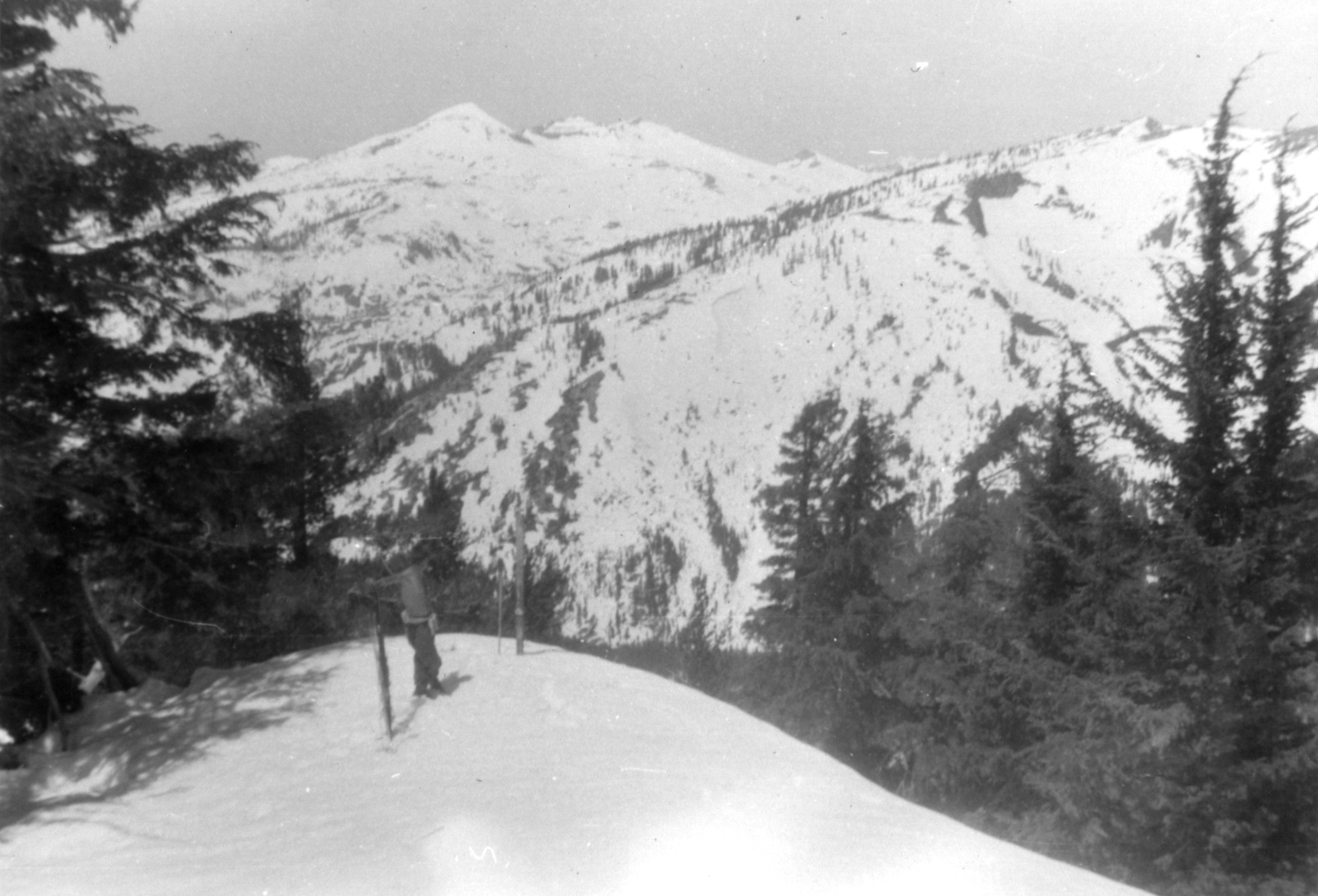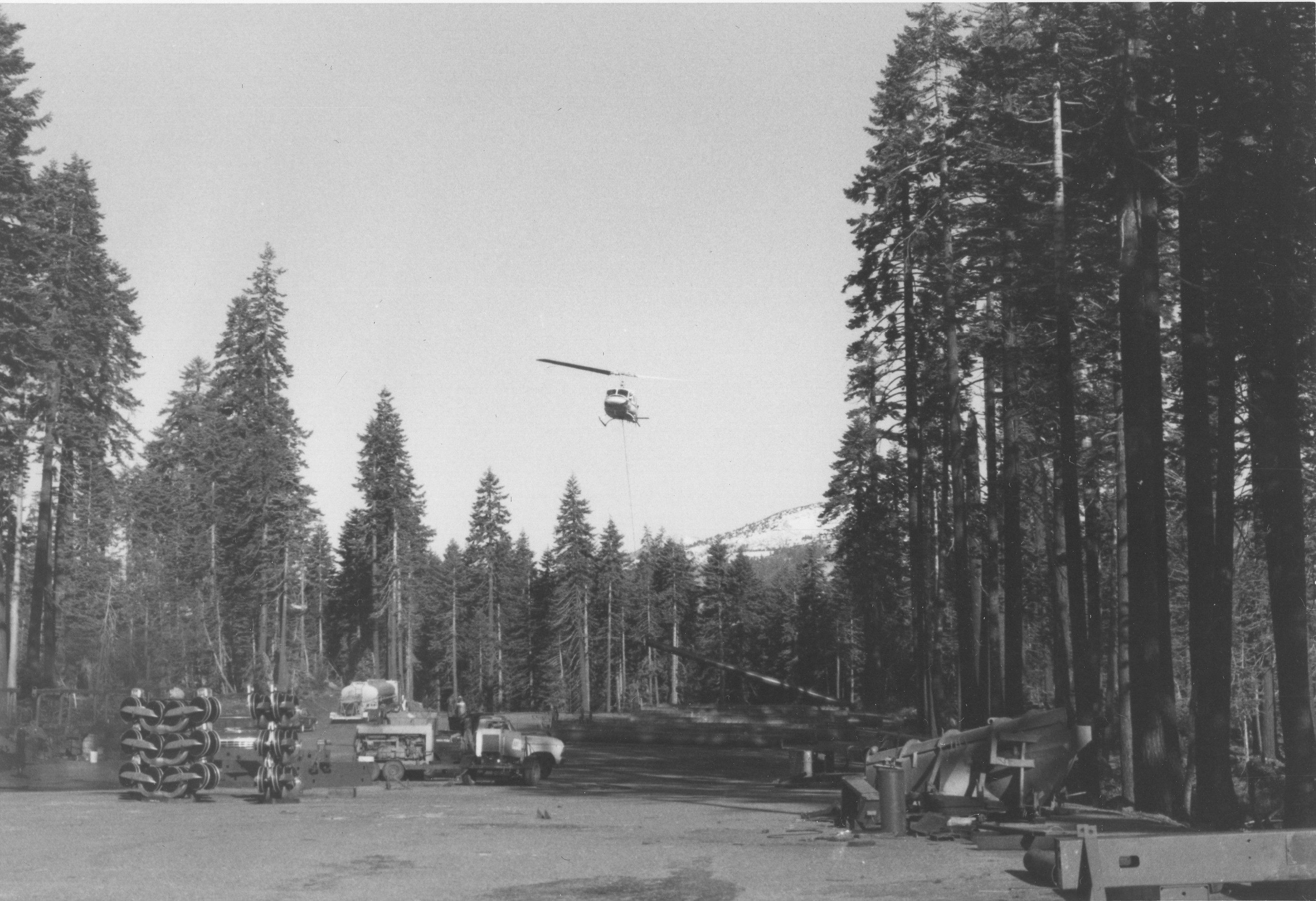3. Sierra ski ranch-sprocks
 The new lodge after the move. Courtesy of the Sprock family.
The new lodge after the move. Courtesy of the Sprock family.
The next chapter in the Sierra-at-Tahoe story is the evolution of Sierra Ski Ranch from a simple roadside ski area to a world class resort. This of course took many decades to fully develop and was a daunting task that required great vision and execution. Like most major changes, not everything went as planned and in some cases outside influences had unintended consequences, sometimes for the better, sometimes not. None the less, what really made all of this possible was the dedication and perseverance of a single individual, Vern Sprock; along with the unwavering support of his wife Bobbie, and his children Kathy and Peter, throughout the period. We also cannot discount the efforts of all the employees, organizations, customers and other parties that worked alongside the Sprocks to ensure Sierra Ski Ranch’s success and growth throughout the forty years of this era. What I hope you take away when reading this chapter is an understanding of the immense dedication and attention to detail involved in the planning, execution and problem solving needed to create and manage a world class winter resort. While we are demonstrating this within this chapter in great detail, all former and current Sierra owners and managers have possessed these abilities. Vern Sprock was one of the pioneers in the ski industry that lead the way and we have some great documentation and pictures to share that story. This chapter is a celebration of the vision of Vern Sprock and its execution by all those who contributed to this remarkable transformation, from “Ranch to Resort”.

The new Pomalift circa 1955
When the Pratts purchased Sierra Ski Ranch from the Barretts in late 1953, Vern retained his role as the resort manager, but now with Bobbie’s assistance. The two of them jointly would be involved in all the managerial operations, maintenance decisions, employee affairs, training, customer relationships and other day to day activities. It was definitely a full-time job for both of them. But at the same time, it was clear to Vern that improvements were necessary to make the little resort competitive. Resorts were sprouting up all over the summit and even in South Lake Tahoe. Faster surface lifts and even chairlifts were starting to appear and four rope tows were not going to hold their own for long.
In the fall of 1955 Vern decided to invest in a new technology from a company in France called Poma, who created high speed detachable ground-based lifts. They could whisk a skier up a 2600-foot-long slope in three minutes. This was a huge improvement and opened up a lot more terrain and added intermediate level runs. Vern also added a parking lot so people could park off the highway and not have the trudge so far to get the lodge and slopes. The area was even more popular than before.

Touring the new area circa 1958.
Then over the next few years the summit saw enormous snowfall resulting in many avalanches. In the late 1950s the California Department of Highways (what is Caltrans today) wanted to realign US 50 over the summit to reduce the potential impacts of these avalanches and were going to put the highway right down the middle of Sierra Ski Ranch. Vern had to find a new home for his resort. Luckily, he and a friend and associate from the USFS, Scollay Parker, had scouted out a great new location just south of the current area. In 1966 the USFS approved the Sprocks plan to move Sierra Ski Ranch into a much larger area starting where the Pomalift ended, but opening up huge bowls higher up for further expansion. A new access road (now Sierra-at-Tahoe Road) would take skiers up to the new base area and lodge. The new facilities opened with great fanfare over Christmas in 1968.
The new resort had a chairlift (the Nob Hill chairlift) and one of Pomalifts from the old location along with a rope tow. It even opened up an advanced area for the first time, the Avalanche Bowl. Over the next several decades the Sprocks would add additional chairlifts, lodges, extended areas and greatly improve the area to what would be considered a full winter resort. About the only thing lacking was overnight accommodations.
In 1989 the Sprocks attempted to fix that last anomaly with plans to add lodging, restaurants, a service station, a gondola and access right from the highway. The USFS was on board and approved their plans but then a local group protested the enhancements fearing irreparable environmental damage to Spotted Owl habitat. The project was scuttled and the Sprocks decided that they had done all they could with Sierra Ski Ranch and it was time to pass the baton.
 Building the Tahoe Queen. Photographs courtesy of the Sprock family.
Building the Tahoe Queen. Photographs courtesy of the Sprock family.